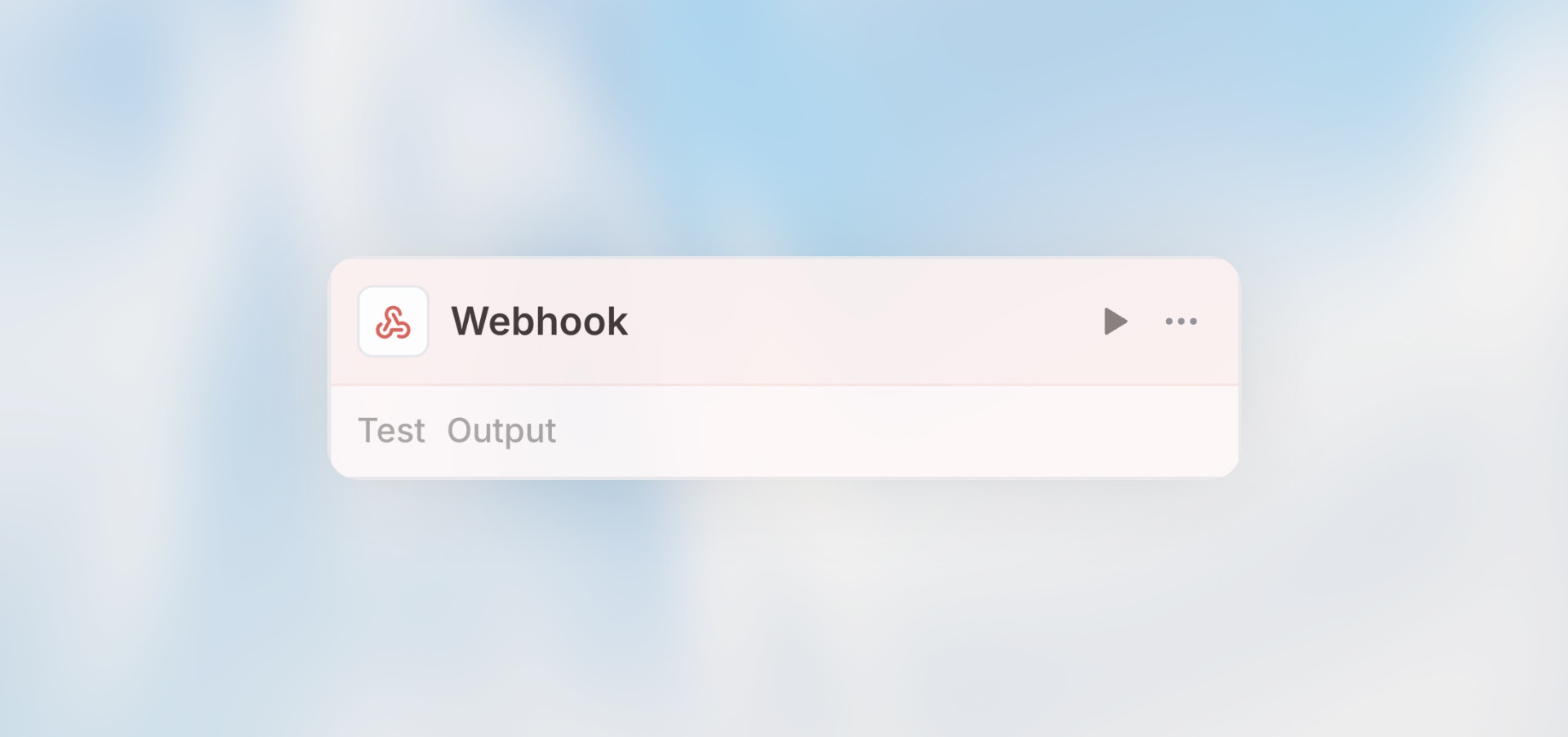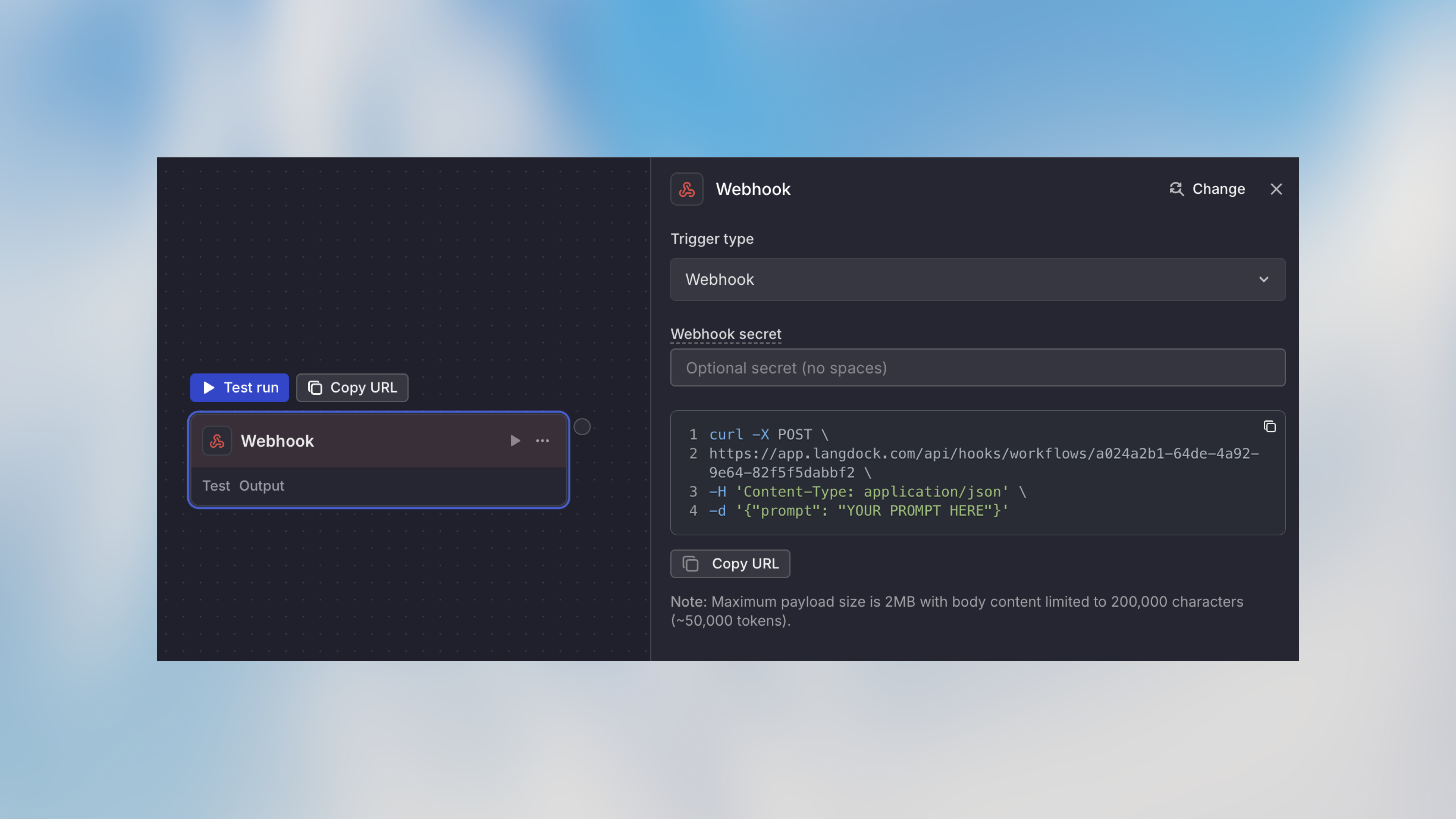
Overview
The Webhook Trigger provides a unique HTTP endpoint that external systems can call to start your workflow. It’s the bridge between Langdock Workflows and any external service or application that can send HTTP requests.Best for: Real-time integrations, external system events, API-driven
workflows, and connecting services without native integrations.
When to Use Webhook Trigger
Perfect for:- Receiving events from external services (GitHub, Stripe, custom apps)
- Real-time data processing from external systems
- Building custom integrations
- Connecting services that support webhooks (including other workflows)
- API-driven workflows initiated by other systems
- User-facing data collection (use Form Trigger)
- Scheduled recurring tasks (use Scheduled Trigger)
- Native integration events (use Integration Trigger)
Configuration
Basic Setup

- Unique Webhook URL: A secure endpoint for receiving requests
- Webhook ID: Identifier for your webhook
Security Options
Secret Authentication: Configure a secret to secure your webhook endpoint:-
Add a Secret (optional)
- Set a secret value in the webhook configuration
- Include this secret in the request header or body when calling the webhook
- Only requests with the correct secret will trigger the workflow
-
No Secret (default)
- Webhook is publicly accessible
- Anyone with the URL can trigger it
- Good for testing and low-security use cases
How It Works
- External system sends HTTP POST request to webhook URL
- Webhook validates authentication (if configured)
- Request payload is parsed (JSON)
- Workflow starts with payload data available as
{{trigger}} - Webhook responds immediately with 200 OK
- Workflow processes asynchronously
Important: Webhooks respond immediately (within ~100ms) and process the
workflow asynchronously. Don’t rely on the webhook response for workflow
results.
Making Requests to Your Webhook
Basic Request
Example Use Cases
GitHub Webhook Integration
- URL: Your webhook URL
- Events: Push, Pull Request
- Content type: application/json
Stripe Payment Webhook
Custom Application Integration
Slack Command Integration
Accessing Webhook Data
Access the webhook payload using thetrigger variable:
Response Codes
| Code | Meaning | When It Happens |
|---|---|---|
| 200 | Success | Workflow triggered successfully |
| 400 | Bad Request | Invalid JSON or missing required fields |
| 401 | Unauthorized | Authentication failed |
| 403 | Forbidden | Workflow is paused or inactive |
| 500 | Server Error | Internal error processing webhook |